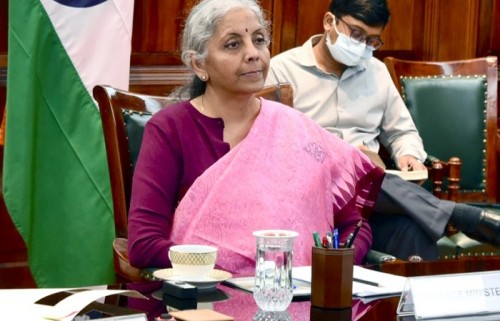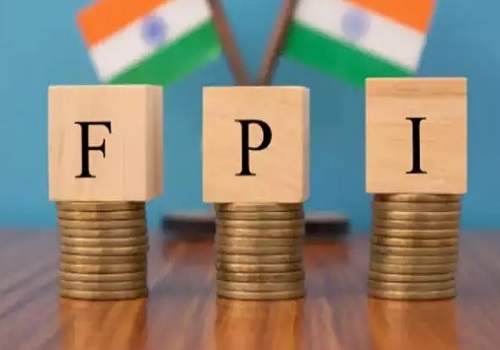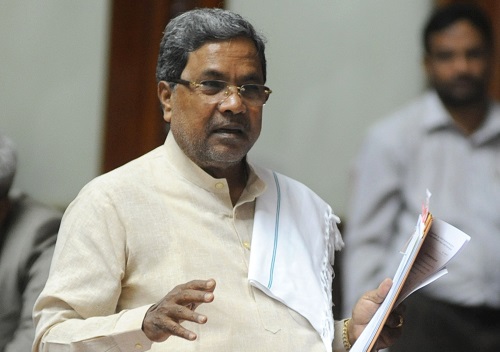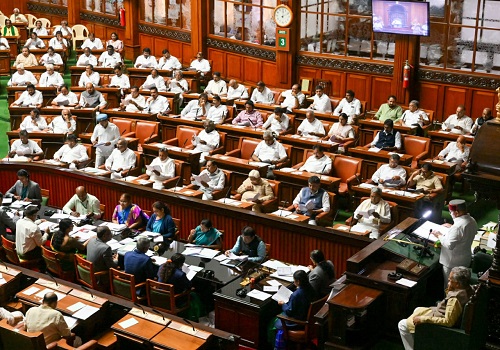FM Nirmala Sitharaman holds the key to a revival of capital markets

Follow us Now on Telegram ! Get daily 10 - 12 important updates on Business, Finance and Investment. Join our Telegram Channel
The Union Budget 2023-24 is less than a week away, actually four calendar days. There are just two trading sessions left and then the budget would be presented on February 1. Yet markets seem unaware of it as there is no reaction or expectation to the expected event which has a special significance.
This Budget would be the last one before the 2024 general elections. The government of the day would use it as an opportunity to meet expectations of as large a population as it could, and keep spirits of its vote bank flowing and flying.
Alas! The situation is completely the opposite and contrary this time around. There seems to be no pre-budget rally and markets are actually sharply down. There are various theories being floated around but let us analyse the situation a bit critically.
Markets since they made their life time highs on the December 1, 2022, seem to be trading in a broad range with 61,343 on BSESENSEX and 18,265 points on NIFTY being the crucial high points and levels of 59,625-59,675 on BSESENSEX and at 17,760-17,795 on NIFTY acting as strong support on the lower side.
Friday saw these levels being broken comfortably and decisively with markets closing below them. The street attributes the same to a report from Hindenburg on Adani Enterprises who are in the midst of their mega follow-on offer issue of Rs 20,000 crore.
This attack by so-called Hindenburg is from the US based investment firm that specialises in activist short selling. Very clearly there is a vested agenda and the Adani group has clarified on the allegations made. The fate of the FPO, which closes on Tuesday the January 31, still remains unclear.
At present levels, the floor price of the share and market price being far away, a reduction in price seems the only alternative if the issue is to be subscribed to. This outcome may happen only on Tuesday as there is no other instance of price being reduced midway through an issue, but only at the end.
In such a scenario, what does the budget have in store for the markets and the common man?
Revenues have been robust with GST clocking an average of Rs 1.5 lakh crore monthly and income tax from corporates and individuals have seen significant improvements.
The PLI scheme has done wonderfully well and has seen India becoming a large mobile phone exporter. Some tweaking of the scheme, extension to new industries and sectors and maybe the time frame may help further boost Make in India. At the same time, changes to customs duty to encourage investments in PLI may also be tweaked to incentivise local production.
The markets expect some relief in STT (securities transaction tax). With trading at the markets increasing rapidly with demat accounts almost touching the 11 lakh crore mark, this number has become big. The ongoing demand of rationalising tax on long-term capital gains tax and dividend is perennial.
Knowing that the salaried and middle class is clamouring for relief on the inflation front, the demand for higher basic exemption limit is reasonable. If the government obliges, it could do wonders.
With nothing negative expected in the budget, markets at rock bottom on account of an unrelated crisis, anything which strikes a chord with the markets could lead to a flare-up. With January futures having expired on Wednesday, positions in the market are light and that is a redeeming feature for the market.
With mood and sentiment currently negative, the possibility that markets get lifted post budget is a very big possibility.
If I believe what three events could do so and hazard a guess, this is what I would say. Firstly focus on growth through infrastructure spend and creating the network to accelerate growth.
Providing impetus to the salaried class and middle class by providing a higher basic exemption limit and proportionate benefit in higher slabs and thirdly giving the thrust to woman and child development across rural India. I believe that if the budget delivers on these broad lines we would see a post-budget rally instead of a pre-budget rally.
The only negative factors working against Indian equities at present is the rich valuation and the outflow of money to Chinese markets. It had happened some time ago as well and at that time, investors burned their money as those markets did not rally.
This time around with talks of recession in the US gaining ground from a whisper to a reality in the latter half of 2023, things could be different. On the positive side India as an economy is expected to do well and continue to grow at a fast pace and probably being the best growth country. In global rankings, it recently overtook the UK and is now the third largest country in terms of GDP.
Numbers on the economic front and corporate results will both determine the future of the markets and how foreign money looks at India. On the positive side, the might of domestic savers investing through SIPs and mutual funds continues to grow significantly. This growth is helping the country act as a counter-balance to FPI selling and giving a sense of great stability to the nation and its financial markets.
In conclusion, the Finance Minister holds the key to a revival of the capital markets post the presentation of the Union Budget on February 1.












 320-x-100_uti_gold.jpg" alt="Advertisement">
320-x-100_uti_gold.jpg" alt="Advertisement">










